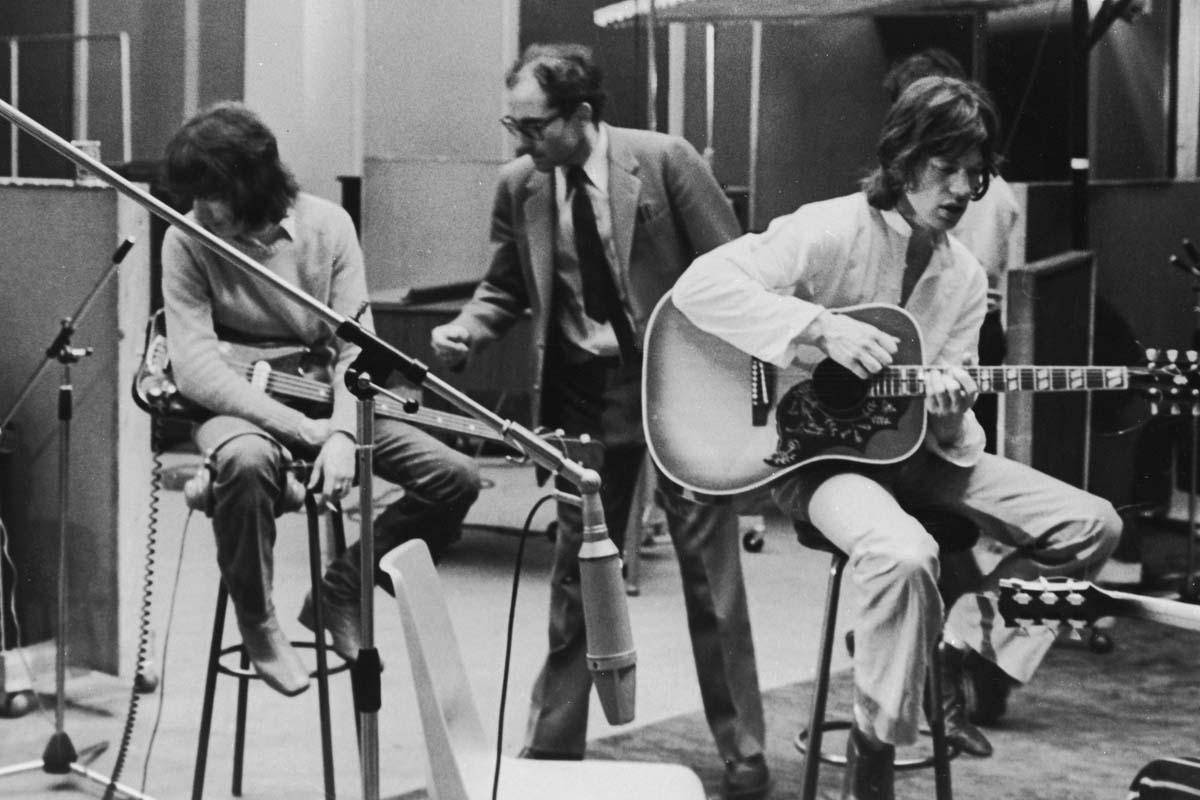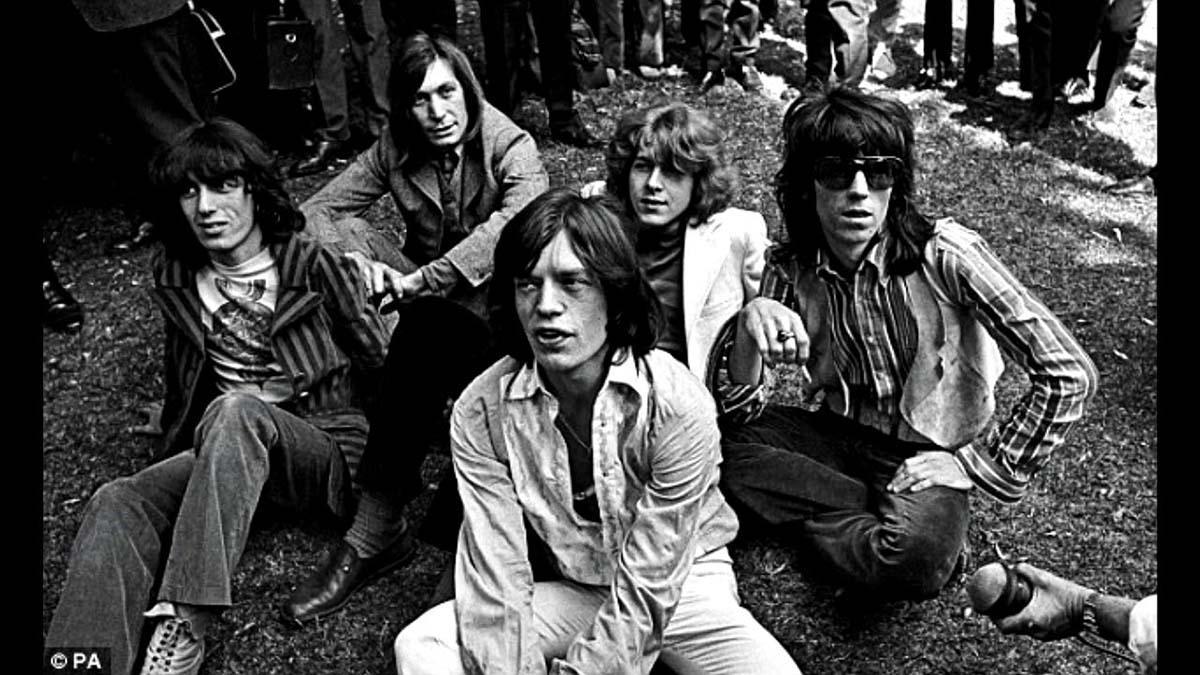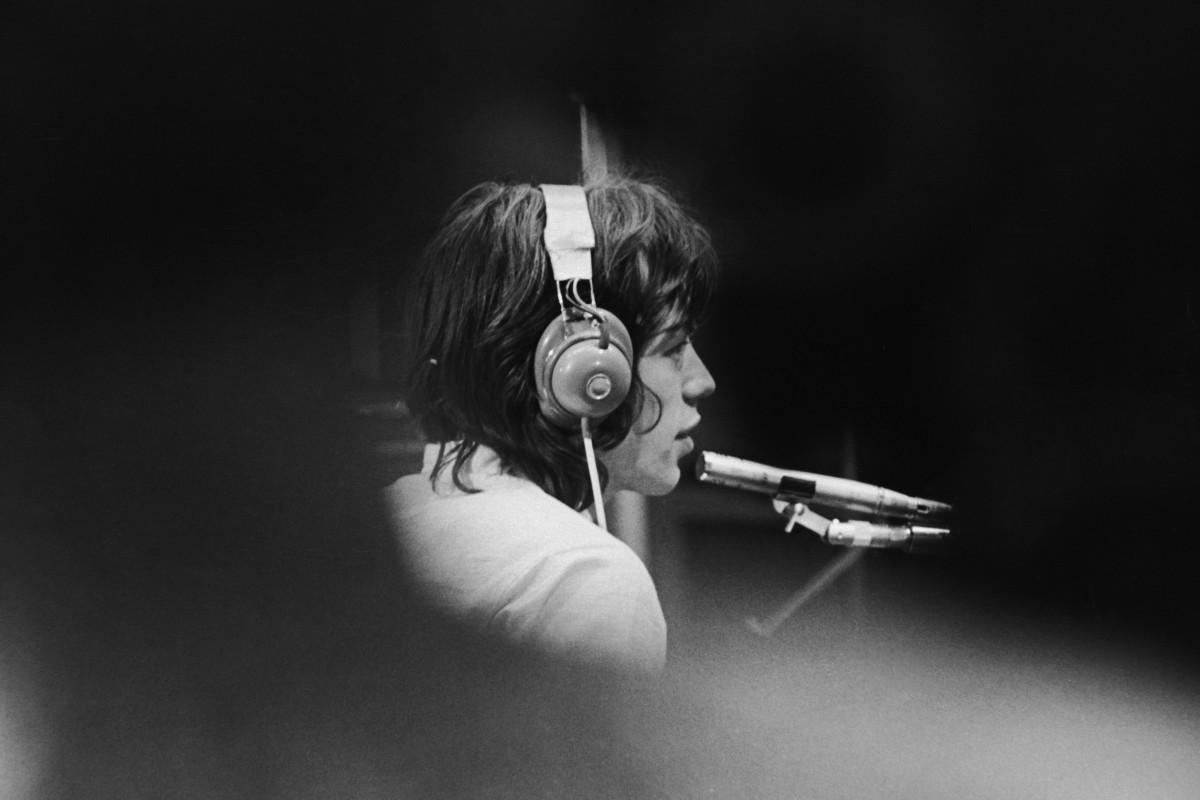Film "One+One / Sympathy for the Devil"
Содержание
The silent opening credits end and we are immediately transported to the legendary Olympic Studios in London. It's June 1968, and the Rolling Stones are creating a new track that would later become legendary on the band's seventh studio album, "Beggars Banquet". All the members are dressed in bright, slightly freaky clothes: colourful trousers, pink boots, crazy shirts. However, they didn't come together for the purpose of making a sensation.
They're changing show business...

There is no clichéd shy posing, no hidden camera play - no indication at all that the band is aware of being filmed. All the members - Mick Jagger, Brian Jones and Keith Richards - are fully concentrated on their musical brainchild, oblivious to external stimuli. The first three acoustic chords are heard, and we, the audience, witness the birth of a future hit. "Please let me introduce myself."Mick hums softly. "I'm a man of wealth and taste...".
Yes - this is the song! We see the Rolling Stones at perhaps the most important and crucial moment of their first decade, as they are just getting ready to emerge from a year filled with drugs, complicated relationships and psychedelic tracks. What's more! We are witnessing one of the most iconic events in the music world - the creation of the composition "Sympathy for the Devil". This song is destined to become the main song of the Rolling Stones, putting them on a rock'n'roll pedestal, defining their "dark" reputation.
The shaggy-haired gentlemen who appear before us are not rock gods spouting genius, but hard-working musicians who come together and hone their skills through trial and error, seeking to find magic and inspiration in the everyday.

The birth of a song in chaos....
As Keith begins to play "Black Beauty" on his Les Paul, his fingers unexpectedly find what would later form the basis of a guitar solo for the "Sympathy.". You can discern genuine delight on his face - this is it, the musical chip he's been looking for for so long.
And for Rolling Stones fans, it's pure thrill to see and hear their idol create a legendary instantly recognisable tune.

Then, long before the goosebumps induced by this moment begin to pass, the film changes location from a comfortable studio to an unattractive London dump. Here, revolutionaries, adherents of the Black Panther Party, read aloud the works of Eldridge Cleaver and Amiri Baraka as they prepare to massacre three captured white women.
Get to know "Sympathy for the Devil" - one of the most frustrating and fascinating rock films in cinematic history. Over the next hour and a half, you're treated to intimate footage of the Rolling Stones' creative process, as well as Jean-Luc Godard's chaotic productions depicting revolutions, devastating strikes and rallies. One moment we're watching Charlie Watts jumping into a groove to his drum kit, and the very next scene we see Anna Viazemsky, a popular actress and Godard's wife, leaving Freudemocracy and Cinemax-inspired murals on the walls of buildings and cars. You see the group, surrounded by their close friends (including Anita Pallenberg and Marianne Faithfull), gathering around a microphone to record the immortal track "Hoo Hoo!", and a couple of seconds later the film's action shifts to a small pornographic bookshop, where small children clap for white revolutionaries while the owner reads aloud to them "Mein Kampf.".
Thus, Sympathy for the Devil is not just a documentary about the Rolling Stones. It is an acute social project built on contrasts and contradictions.

"I just wanted to show something in the design."," Godard later admitted in a 1969 interview for Rolling Stone. "To show that democracy, whatever it is, is very constructive. Not to destroy any established rules, of course, but simply to say that we are against war, even though we are not doing anything substantial for peace and tranquillity."
Feedback and criticism
The film was met rather coldly by critics, receiving mixed reviews. It was often called blatant and overly pretentious, referring to Tom Wolfe's quotes about "radical chic" - the romanticisation of revolutionary movements among young people motivated more by fashion than by real political or social convictions. Despite this, the reissue of Sympathy for the Devil has shown that the dramatic side of the tape is still relevant, has the hallucinatory glamour of the historical period referred to.

"I hadn't seen it on the big screen until recently," admitted Tony Richmond, the Sympathy for the Devil cameraman who oversaw the colour correction processes of the restored tape. "And I have to say it's fantastic! I think it's the first and only time you'll ever get to see the Rolling Stones at work. This film really shows how they write music!".
Shooting the film and writing the music
It's amazing to watch the song evolve from a "talking" blues to a fiery Latin rock classic. But it's even more fascinating to watch the crazy energy and dynamics between the Rolling Stones in the studio. Keith, like an honourable pirate, merrily and cheerfully absorbs the energy of the room, transforming it into funky, spiky guitar parts. Mick, characterised by his capriciousness and impatience, is irritated by Charlie's inability to engage in time with the percussive intro. And contrary to popular accusations that by the time of the recording. "Beggars Banquet" Brian has managed to become a ghostly shell of himself, he seems quite involved in the creation process "Sympathy.".
"Being in the studio at that moment, I could honestly say - there was no disagreement between them!" - Richmond, who worked with the Rolling Stones on "Jumping Jack Flash" and "Child of the Moon," later claimed. "They all seemed quite happy and friendly towards each other. You can see it in the film - Brian and Keith sharing cigarettes, throwing lighters to each other, just like mates... If there was any tension at all, it was only when they were working with the drums. Mick would get a bit upset with Charlie, but that was it. I mean, it was like, "Come on, Charlie." And even that was hard to call real tension. They were just... trying to record a track."

Godard, a pioneer of the French New Wave, originally wanted to create a film story about rock and revolution, centred around The Beatles, the biggest and most influential band of the time. But when the legendary Liverpool Four turned down the film, he addressed the proposal to the Rolling Stones. And, if we are honest, their image was more like the director's idea. Thus, Mick Jagger was repeatedly harassed by the British police. He took part in marches and demonstrations against the Vietnam War and drew inspiration for his future songs from revolutionary riots and movements.
Richmond recalled that the hardest part of filming was predicting when the Rolling Stones would actually show up at the studio.
"We used to get there around six or seven o'clock in the evening, but the band could come at any time. Sometimes they'd turn up close to midnight, you know what that meant? That the rehearsal would go on all night! The only thing we were in charge of was the positioning of the musicians. We'd mark Mick, Keith, Brian and Charlie's positions, line up the lights and that was it. It was strictly forbidden to disturb them between takes," he later recalled.
"As soon as the guys arrived at the studio, they would immediately get involved and we would start filming. We were very quiet, always stayed in the background. Nobody ever disturbed or bothered them. It was like we were invisible, and it was amazing!".
According to Richmond, it was much more difficult to shoot scenes outside of the rehearsal process. Freehand work without a detailed plan or script took place in a guerrilla style - no warnings and no authorisations.
"We really didn't have any script. And it drove everyone crazy!" - Richmond nostalgised with a smile. "We had four or five days in London to shoot street footage. I armed myself with a little hand-held camera at the time. Together with Godard and his wife, we'd get in the car and the chauffeur would just drive us around until Jean-Luc would shout, 'Stop!' I'd get out, get on my knees and film Anne running out after me and starting to smear the walls. We didn't have any permits, and the paint in her hands was real! I don't even know why we weren't arrested...".
Increasingly frustrated by Godard's improvisational approach and his refusal to speak English, the project's producers, Michael Pearce and Ian Carrière, eventually disenfranchised the director. They renamed the film, which finally pissed him off.
Autumn came, for which Sympathy for the Devil was scheduled to premiere.
The film was due to be shown as part of the London Film Festival
On the day of the screening, Godard went to the theatre, where he caused a huge scandal. He shouted various threats, promising to organise his own demonstration of the "mercilessly cut" film "One Plus One.". Godard demanded that the audience return their tickets and go to a nearby car park to watch the film with him. The director still managed to find twenty like-minded film-makers, but a rainstorm interrupted his plans.
"I was very disappointed with the band," Godard complained to a Rolling Stone reporter in a 1969 interview. "They didn't even say that it was an incorrect idea to add a completed version of their song to the end of the film. I wrote to them, but they didn't say anything. It was very unfair of them!".
This half-documentary remains a pretty important work. Despite all the flaws and problems, the film has great value, if only because it captures the final moments when the Rolling Stone era was still associated with Brian Jones.
If you've ever dreamed of travelling back in time to attend a Rolling Stone rehearsal with their legendary line-up, then "Sympathy for the Devil" is your direct ticket to 1968.



